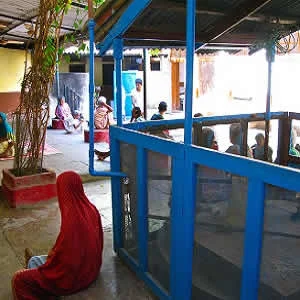Resource limitations should not discourage hospitals in finding ways to improve the quality of healthcare services. There are simple, and inexpensive, interventions that can be implemented to achieve quality improvement goals. For example, a simple quality toolkit (of checklists, education materials and quality and performance reporting) helped improve the quality of care but not outcomes in hospitals in the South Indian state of Kerala.
Previous studies had identified gaps in the quality of care in Kerala, so an international consortium including Northwestern University and several Indian public health and professional institutions recruited more than 21,000 patients from 63 hospitals between 2014 and 2016 to try and improve heart attack care. The Acute Coronary Syndrome Quality Improvement in Kerala (ACS QUIK) study represents the largest randomised trial in cardiovascular medicine in India to date, an important milestone in a country that has more heart attacks than any other.
Over the course of the study, hospitals were first assigned to deliver usual care, but were then randomly assigned to implement a quality improvement toolkit that included audit and feedback reporting, checklists, patient education materials and linkage to emergency cardiovascular care training, which are all common strategies in the United States. During the study period, investigators measured the quality of care delivered by physicians, as well as patients' rates of major cardiovascular events including death, heart attack, stroke or major bleeding 30 days after hospital discharge.
Results showed that the intervention group experienced higher rates of key in-hospital and discharge medications. The intervention group also experienced lower rates of major cardiovascular events at 30-day follow-up compared with the usual care group – 5.3% versus 6.4% – but after accounting for variables including time trends, those findings failed to reach the level of statistical significance.
While most studies would have determined that the intervention led to these differences in outcomes, the "stepped wedge" design used by the ACS QUIK team allowed for adjustment of important variables such as time trends.
"While we hoped that our trial would achieve its primary outcome, we demonstrated a high level of baseline care in Kerala. Without using the stepped wedge design, we would have incorrectly determined that our intervention was more effective than it was, which is important for setting policies to improve heart attack care," explained Mark Huffman, MD, MPH, associate professor of Preventive Medicine in the Division of Epidemiology and co-first author of the study. The stepped wedge method is meant to improve investigators' understanding of the effects of complex interventions, but has been rarely used because of its logistical challenges.
The overall results of the study, published in JAMA, suggest favourable trends in outcomes amongst heart attack patients in Kerala. The improvements in several process-of-care measures for patients having heart attacks, including restoring blood flow to tissue or opening closed arteries with medicine or stents, demonstrated the toolkit's potential for improving the quality of care delivered at Indian hospitals, including those with lower baseline performance, according to the authors.
"Global health is an area of strategic focus for Northwestern University," Dr. Huffman said. "This large trial shows the institution's commitment to improving the health and healthcare of people in limited resource settings."
Source: Northwestern University
Image Credit: Ken Wieland
Latest Articles
Healthcare, opioid, quality improvement goals
Resource limitations should not discourage hospitals in finding ways to improve the quality of healthcare services. There are simple, and inexpensive, interventions that can be implemented to achieve quality improvement goals. For example, a simple qualit


![Tuberculosis Diagnostics: The Promise of [18F]FDT PET Imaging Tuberculosis Diagnostics: The Promise of [18F]FDT PET Imaging](https://res.cloudinary.com/healthmanagement-org/image/upload/c_thumb,f_auto,fl_lossy,h_184,q_90,w_500/v1721132076/cw/00127782_cw_image_wi_88cc5f34b1423cec414436d2748b40ce.webp)







